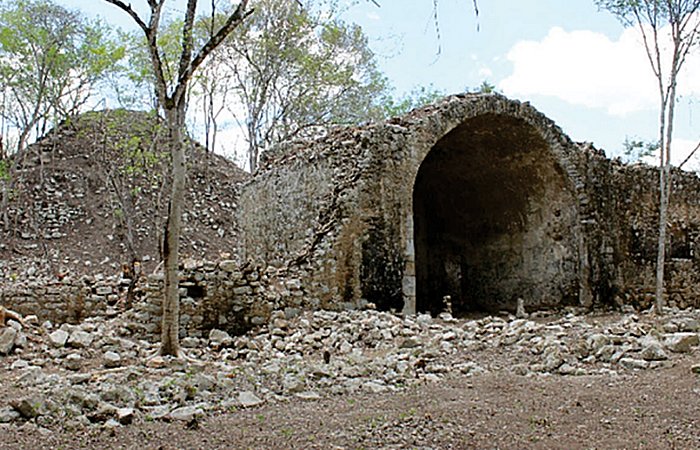Conny Waters – AncientPages.com – A team of researchers has uncovered the history of Hunacti, a 16th-century mission town featuring stone streets and a Spanish-style church. However, behind its appearance lies another story of this small town. It’s a story of Hunacti’s residents’ steady commitment to preserving Maya religious traditions and coping with the persistent persecution by Spanish colonial authorities.
Ruins of the Hunacti church. Image credit: Carlos Peraza Lope. Source
The town, located on the Yucatán Peninsula, was initially established in 1557, and abandoned just 15 years later in 1572. This brief period of inhabitation prompts us to wonder and invites to further exploration into the reasons behind its desertion.
A team of researchers, headed by UAlbany anthropologist Marilyn A. Masson, collaborated with experts from Mexico’s Instituto Nacional de Antropología e Historia, Morehead State University, and the University of South Wales to conduct an excavation. Their work focused on uncovering three elite residences, the central plaza, and the church.
The results provide insights into how a short-lived Hunacti managed to navigate the challenges and disruptions brought about by the early period of Spanish colonial rule.
Researcher Masson describes Hunacti as a paradox, noting that despite its grand construction and initially cooperative leadership, it became recognized for persistent resistance of its citizens, even at significant cost.
Archaeological findings provide evidence of an organized urban layout, featuring residential areas, communal spaces, and ceremonial structures, indicative of advanced urban planning. The town’s early expansion and prominence earned both the admiration of its residents and the attention of external authorities.
It was thoughtfully designed as a satellite community, periodically visited by Franciscan friars from larger convent centers. Its layout was a reflection of Spanish ideals, with gridded streets extending from a central plaza. Here, a T-shaped church stood prominently against the backdrop of pre-Hispanic pyramids and administrative buildings. Surrounding the plaza were three large elite houses, constructed in the Spanish style with plastered walls, arched windows, and niches.
A team of archaeologists works at the site of a Colonial-era church amid the ruins of the former Maya town known as Hunacti in northern Yucatán, Mexico. Image credit: Marilyn Masson/University at Albany
The town’s founding leaders enjoyed unusual privileges for Maya elites under early colonial rule, such as access to horses, ownership of a cacao orchard, and control over significant construction labor. For the moment, the society was flourishing, importing goods, developing craftsmanship, and was capable of negotiating trade and political influence.
However, Hunacti’s citizens never entirely abandoned their traditional practices, and and they held fast to Maya traditions. Excavations in all three elite residences and various sections of the church, revealed effigy censers, which are ceramic incense burners depicting faces or figures of ancient Maya deities.
According to Masson, many of these censers were above the final colonial floors, indicating their use continued until the settlement’s end, despite Franciscan prohibitions.
in the 1560s, the town figured prominently in the infamous Franciscan ‘idolatry trials’ led by Diego de Landa. who targeted Maya leaders for continuing traditional religious rites. In 1562, Maya leader Juan Xiu was arrested with eight others and died under torture for alleged human sacrifice. In 1565 and 1570, other leaders faced public lashings for idolatry.
By 1572, famine led to the abandonment of Hunacti, with residents likely relocating to nearby Tixmehuac.
Written by Conny Waters – AncientPages.com Staff Writer



